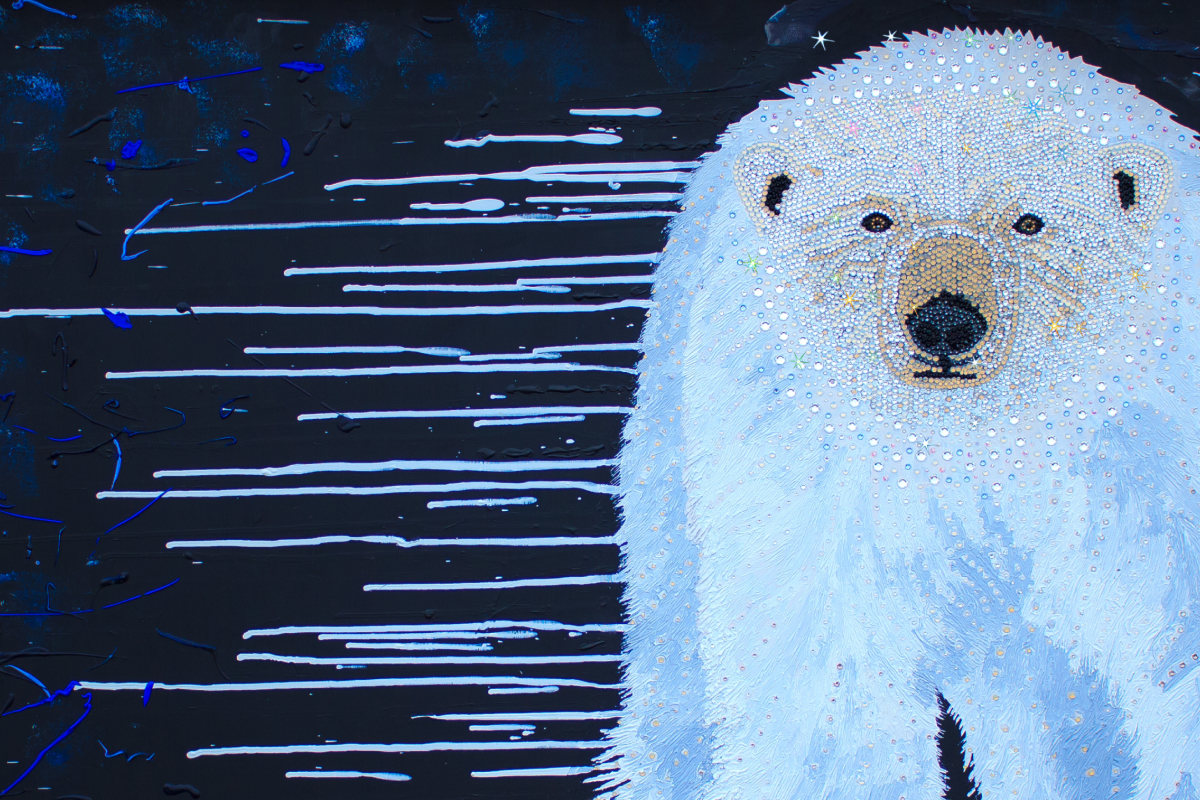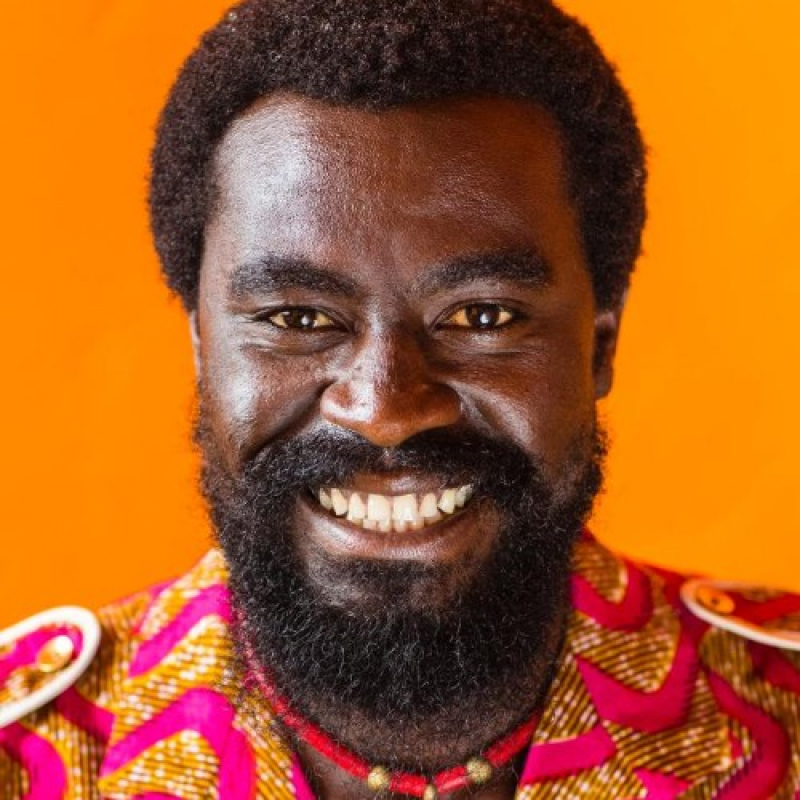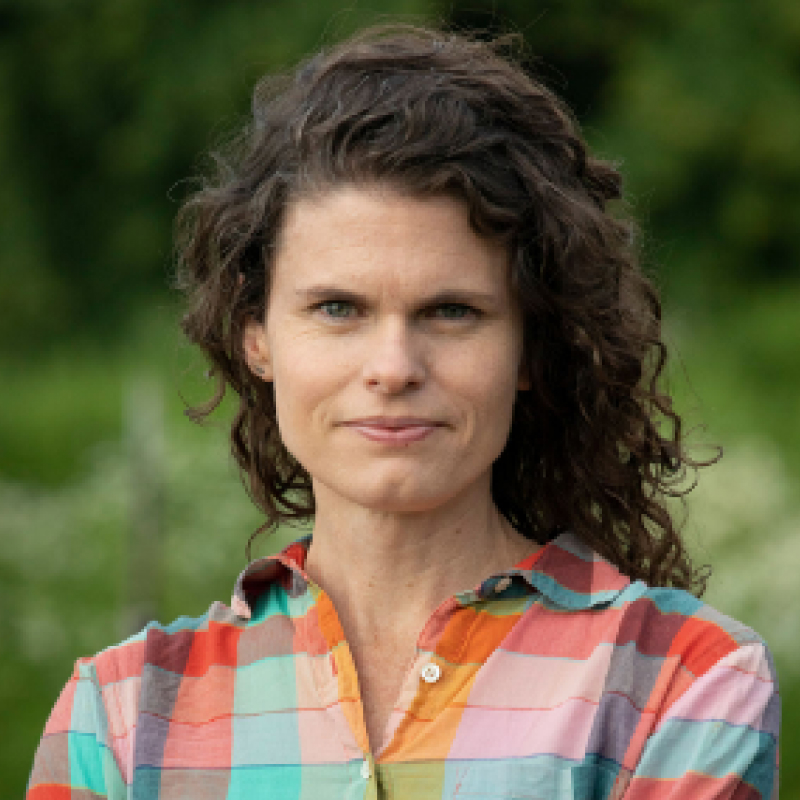Art has long held the potential for social activism—Pablo Picasso,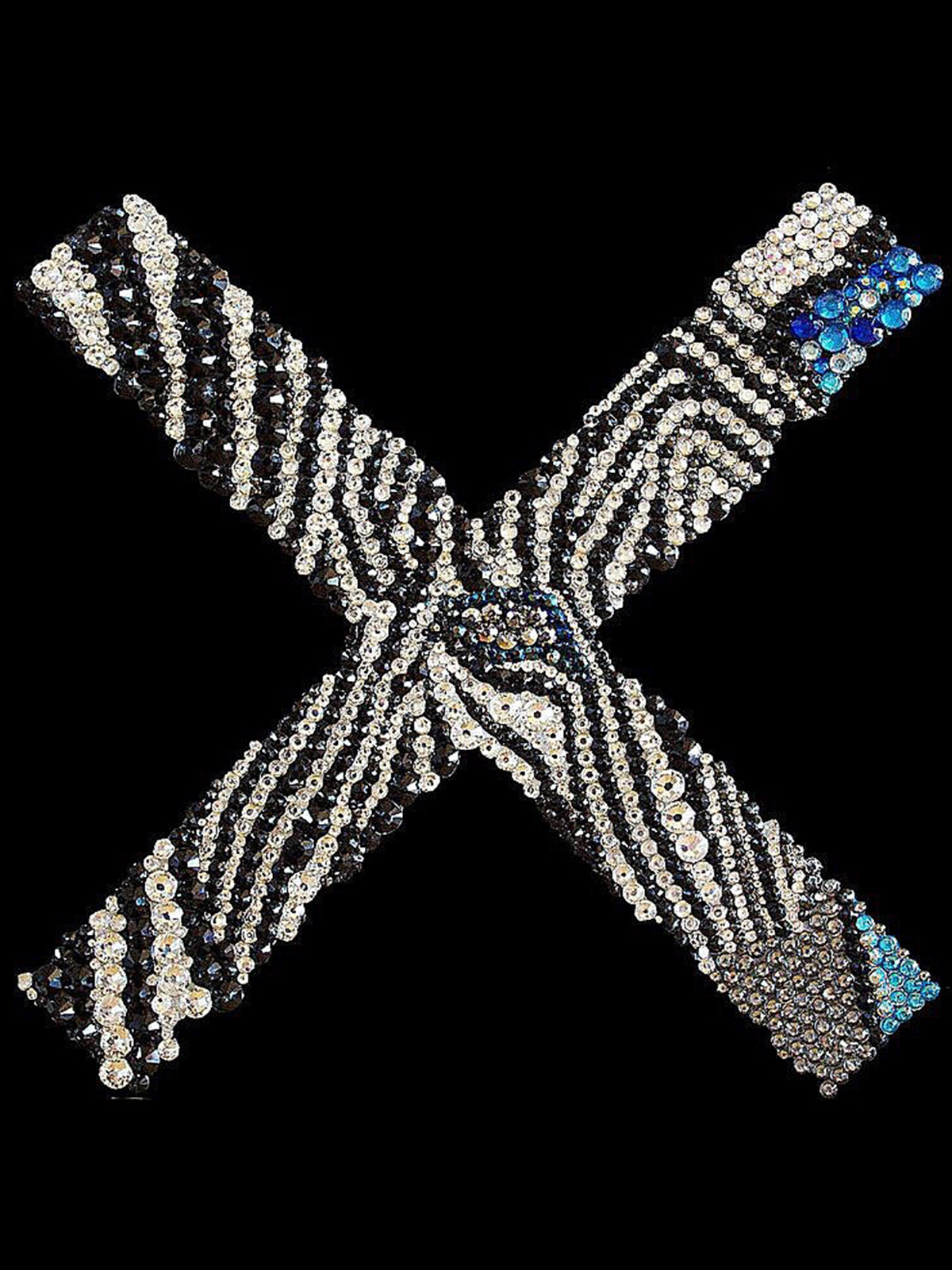 Judy Chicago, Banksy, to name a few. British artist Claire Milner belongs on the list. Her large-scale paintings explore identity, gender, politics and fashion. But dearest to our heart are her depictions of animals and the environment. From poaching and climate change to habitat loss and captivity, Milner powerfully yet tenderly exposes the toll all of these take on wildlife and endangered species. Each day, more animals slide toward extinction. She also portrays people. In fact, Rhianna famously commissioned a 5’ x 5’ portrait of Marilyn Monroe made from 65,000 hand-applied Swarovski crystals. Its effect is magical, but here too Milner turns her keen eye for suffering on Monroe, painting Norma Jeane on the back, forever hidden from the world while the celebrity persona sparkles on display.
Judy Chicago, Banksy, to name a few. British artist Claire Milner belongs on the list. Her large-scale paintings explore identity, gender, politics and fashion. But dearest to our heart are her depictions of animals and the environment. From poaching and climate change to habitat loss and captivity, Milner powerfully yet tenderly exposes the toll all of these take on wildlife and endangered species. Each day, more animals slide toward extinction. She also portrays people. In fact, Rhianna famously commissioned a 5’ x 5’ portrait of Marilyn Monroe made from 65,000 hand-applied Swarovski crystals. Its effect is magical, but here too Milner turns her keen eye for suffering on Monroe, painting Norma Jeane on the back, forever hidden from the world while the celebrity persona sparkles on display.
There is so much complex symbolism surrounding the animals in your paintings. What moves you to include what you do?
My approach primarily originates from a passion for nature and animals, a love of art history and literature, and lifelong values. Environmental references such as climate change and mass extinction have been part of my process for over a decade. I also draw widely from many personal interests and experiences and include motifs alluding to politics, science and fashion. Much of the work is allegorical.
My evolving collections explore my role as a witness to my own era and simultaneously reference paintings from art history. I am inspired by my love of Africa and many of my paintings recall my time spent living and traveling both there and throughout South America. My main focus relates to nature, our place within it and encroachment upon it, emphasizing the uneasy juxtaposition of abundance and loss. My paintings highlight the connection and disconnect between humankind and the natural world, contrasting commercial values with those of environmental ideals as determinants of worth.
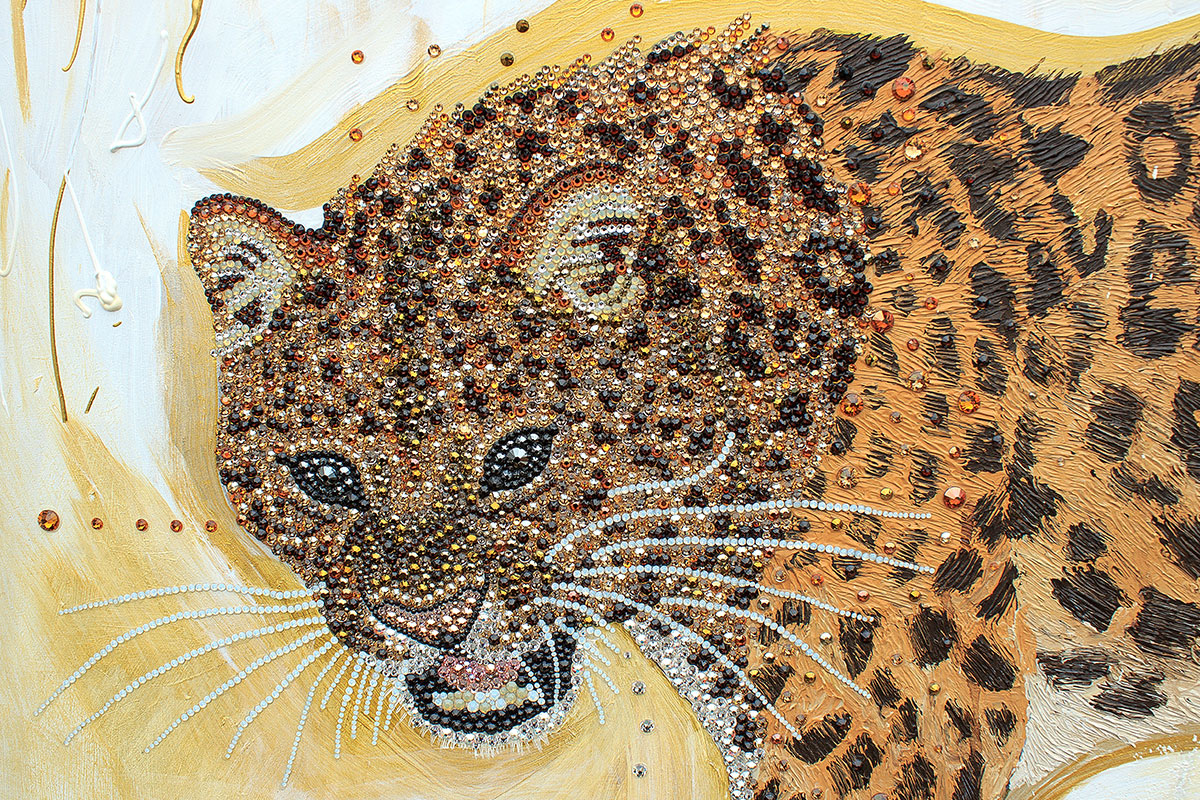
What are goals with your artwork? What sort of impact do you hope to have on the plight of endangered animals and the planet?
I feel very privileged to be in a position to use my work to raise awareness and funds for environmental and conservation organizations. One example, Burning Bright (private collection, Germany) was influenced by the jungle paintings of Rousseau and “The Tyger” poem by William Blake. The preciousness of the living animal is represented as a mosaic created with 32,000 Swarovski crystals, which at the time the work was created, represented ten times the number of tigers left in the wild. The artwork includes a call to arms which rhymes with the first line of Blake’s poem, and a snare—a common method of poaching. This work was exhibited at Hotel Cafe Royal and The Savoy Hotel, London and auctioned by Paddle 8 in aid of Save Wild Tigers, The Born Free Foundation and The Environmental Investigation Agency.
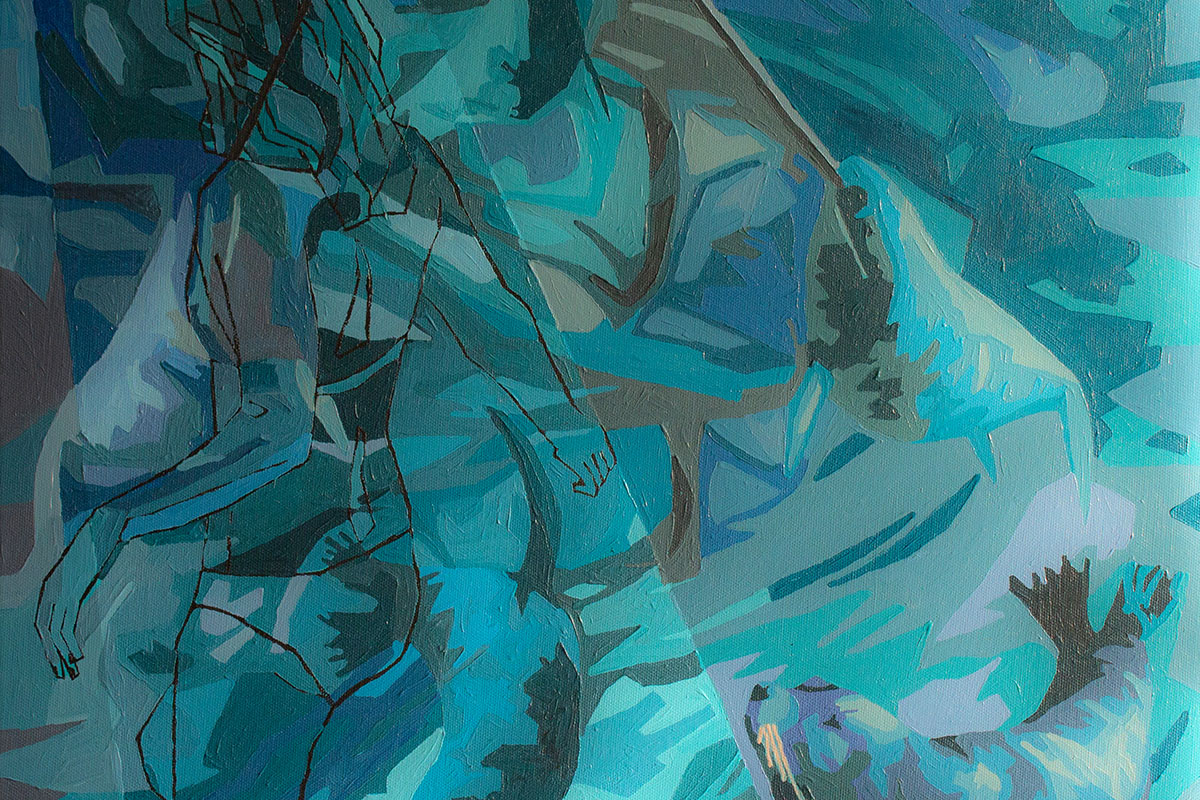
How has your love of animals, the environment, and the ocean informed your work?
These things have always been intrinsic to my life and the center of my identity. And for a long time, it was in the vanguard when climate change, mass extinction and ocean pollution were marginal topics. Rightly, these issues are now at the heart of the current debate over the existential threat to all life on earth. I created a piece incorporating information about hydrothermal vents or ‘black smokers’ in conjunction with the International Year of Planet Earth designated by IUGS and UNESCO. Another from the True Value collection entitled The Dark Side, is an allegorical painting meant to call forth the importance of being conscious of the world outside of one’s immediate environment (in these times of narrowing political ideologies).
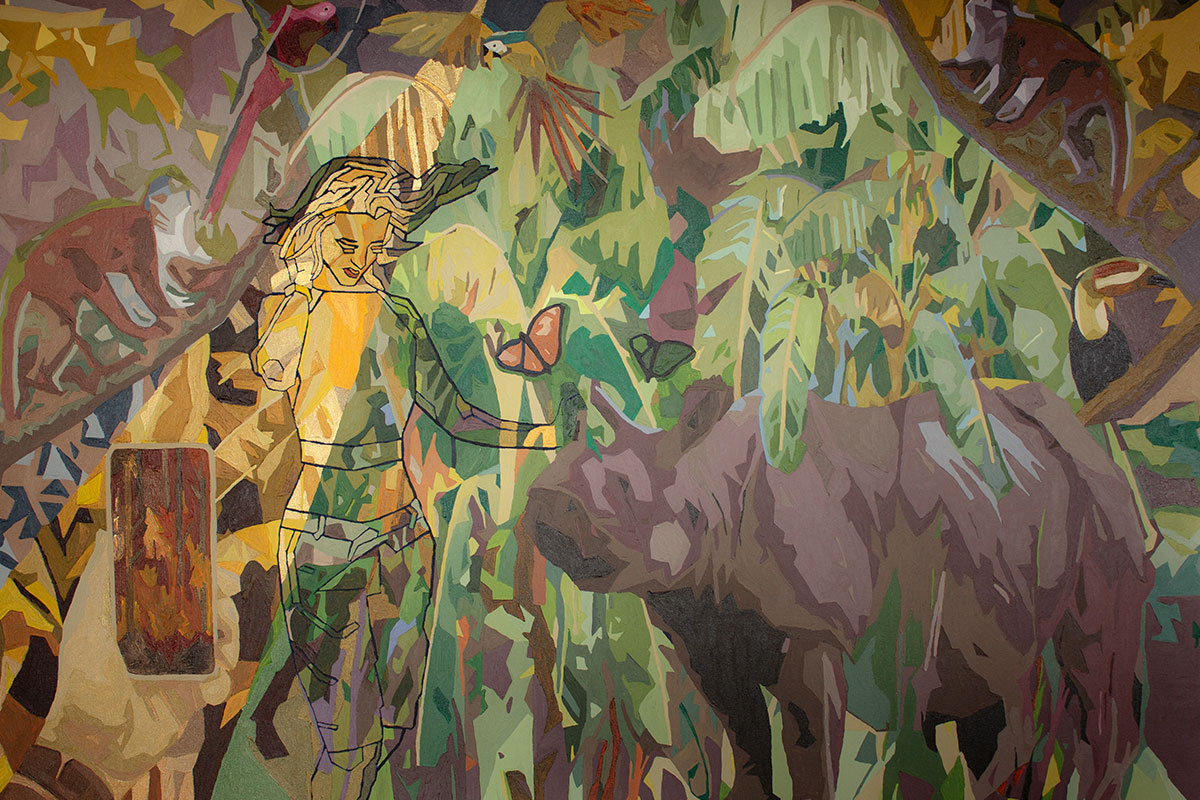
What sort of research goes into each piece of art?
My process begins with extensive and often difficult research into my subject matter. I engage in hours of study, compiling statistics and viewing painful imagery. It can be extremely upsetting—I might see the remains of an elephant poaching victim; marine creatures swallowing plastic; or the impact of climate change on animals and communities. It’s difficult to translate that devastation into a thing of beauty and still retain the core of the critical message in a way that keeps people engaged. Pure shock value isn’t always effective. It takes more time, effort and creativity to digest often-painful information and present a surface optimism with a depth that concurrently speaks to much darker issues. Many find my artwork joyful and uplifting at first glance, then they discover the subtext woven into the work on subsequent viewings which become a talking point.
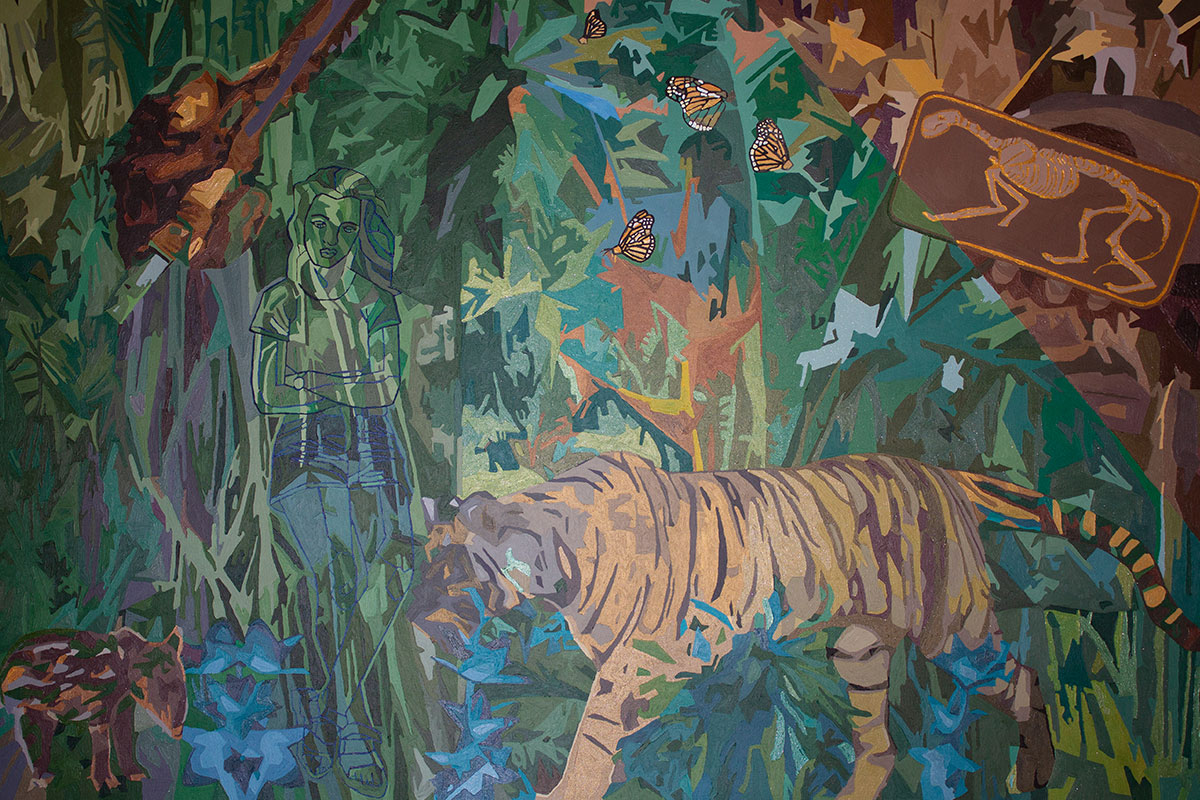
Do you prefer to portray people or animals?
My focus is primarily on the natural world, but the impact of humanity is always implicit within my artworks—even when the human figure is absent or plays a minor role in the composition. My portrayal of animals interchanges between the metaphoric and the literal and follows a long history of animal images in art for as long as humans have existed. People are generally integrated into my work as a secondary device to assist the narrative.
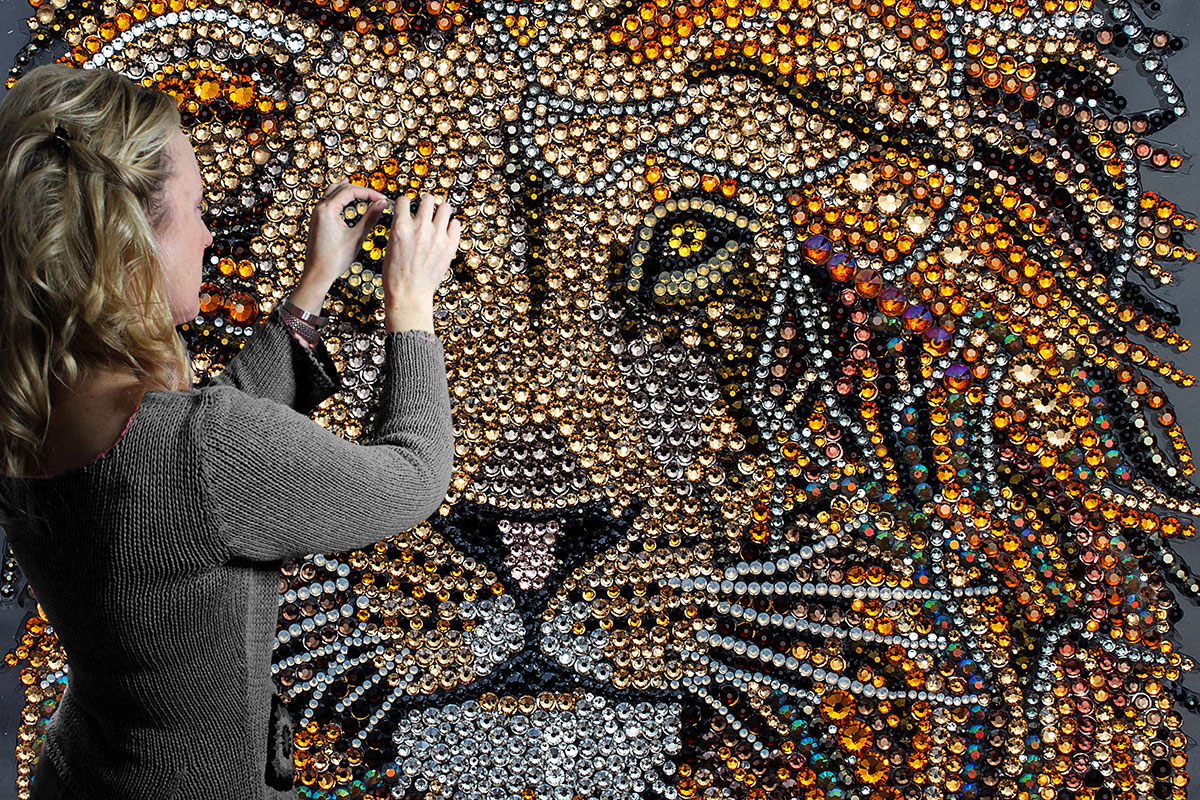
What inspired you to work with crystals?
My husband is Italian, and I spend a lot of time in Italy looking at art. After a visit to the city of Ravenna, famous for its early Byzantine and Christian monuments, I enrolled in a mosaic school with the eminent contemporary mosaicist Elaine M. Goodwin. This welcomed a new departure for my work, whilst at the same time representing an organic evolution of my early paper collage illustrations. I began creating contemporary mosaics with different materials, and having previously included crystals in an early mosaic, this developed organically to creating works exclusively with crystals. I use the ancient techniques and flow of andamento in the same way as a historical mosaic. In 2011-12 I was commissioned by Rihanna to create my biggest, most challenging crystal mosaic: a 5’ x 5’ portrait of Marilyn Monroe made with 65,000 individually hand-applied Swarovski crystals. On the reverse of the flamboyant Swarovski Marilyn, and as a commentary on the life of a celebrity, I painted a very understated symbolic representation of Norma Jeane. This secret portrait remains hidden and unseen, facing the wall, whilst her famous alter-ego, and Swarovski mirror image, Marilyn Monroe, stares out at the world. The success of this work and the positive global reaction to it at the time led me to experiment further. I began introducing the crystals into new mixed media collections. They are aesthetically beautiful, dynamic and create wonderful 3D effects. Most important is their capacity for me to use them as a vehicle to develop metaphors in my work on endangered species and climate change.
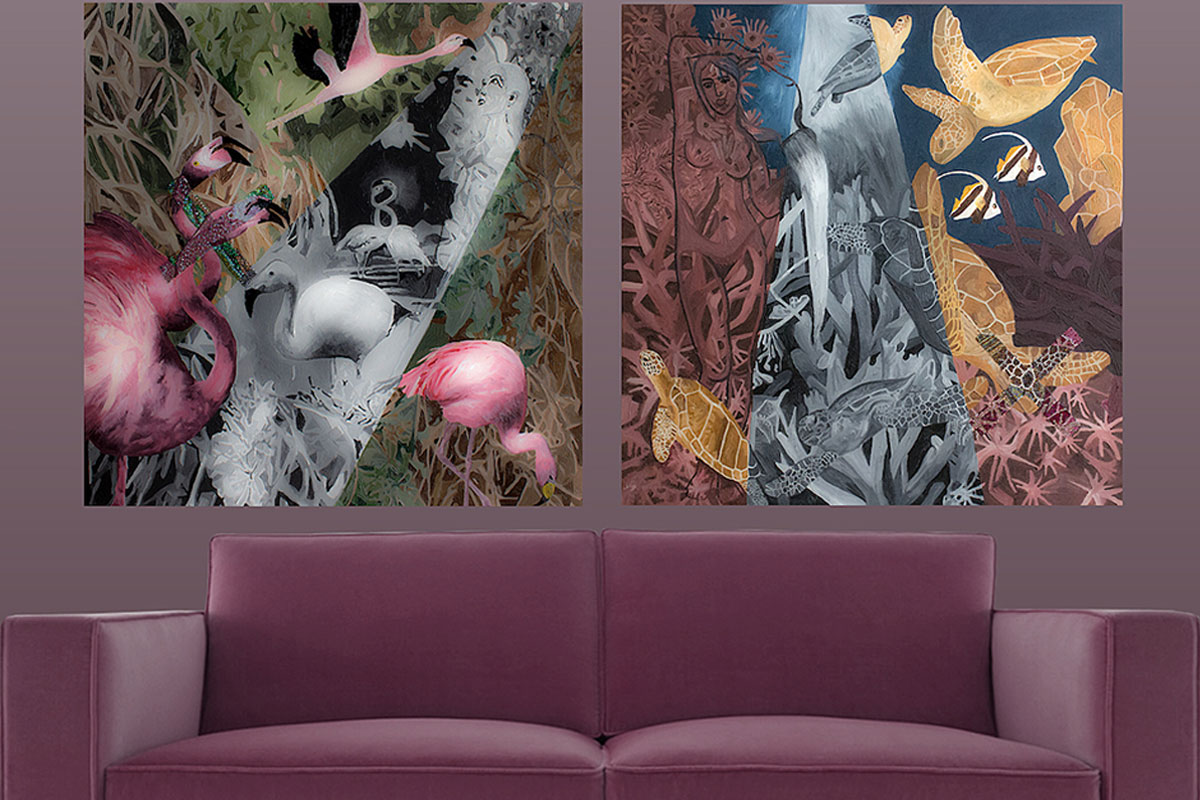
What other materials do you use?
My methods also include the use of mixed media, paint, handmade paper collage, and typography. An organic progression from early artworks in collage, mosaic and crystal mosaic represent a process of construction and deconstruction, thematically and technically demonstrating appearance and disappearance. Mixed media works feature precious crystal mosaics undercut by painted backgrounds and Latin graffiti drawing attention to multiple dangers. These distinctions of luxury and minimalism are utilized as a metaphor for profusion and extinction. The mixed media paintings are a combination of many techniques and incorporate text, commentary and hidden messages. They feature keystone species created from thousands of individual elements which appear abstract on close scrutiny, and on viewing from a distance, the big picture emerges into focus. Isolated in the picture plane, the creatures represent the last of their species and are elevated to the importance of human portraits. The works include quotations from environmentalists, philosophers and scientists. My latest works don’t include crystals and are a collection of large-scale paintings on canvas incorporating self-portraits in semi-abstract landscapes and seascapes featuring a wide range of species.
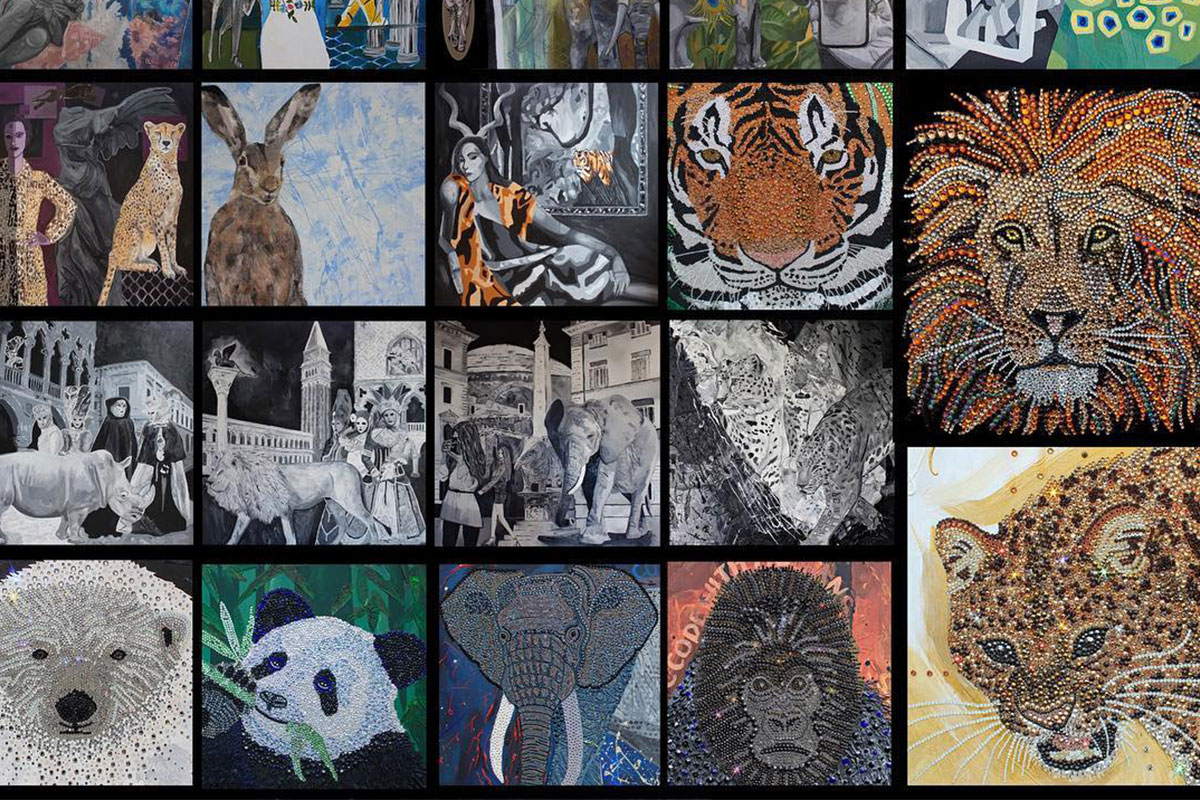
What do you see as the role of an artist in society? Should they be intent upon more than producing good art?
Art does not exist in a vacuum. I believe an artist’s role is to hold a mirror up to the issues of their time. The international language of art can cut across many boundaries that exist in other spheres, and reach a wider audience with accessible yet critical messages. Sometimes a painting can provide a less polarized talking point. Of course, the work itself must be of optimum quality and have the ability to stand on its own, without a narrative, regardless of the intent behind it. My personal values, analyses and techniques coalesce with deep research on my subject matter to create ‘artivism’ in order to spark a positive social and ecological impact.
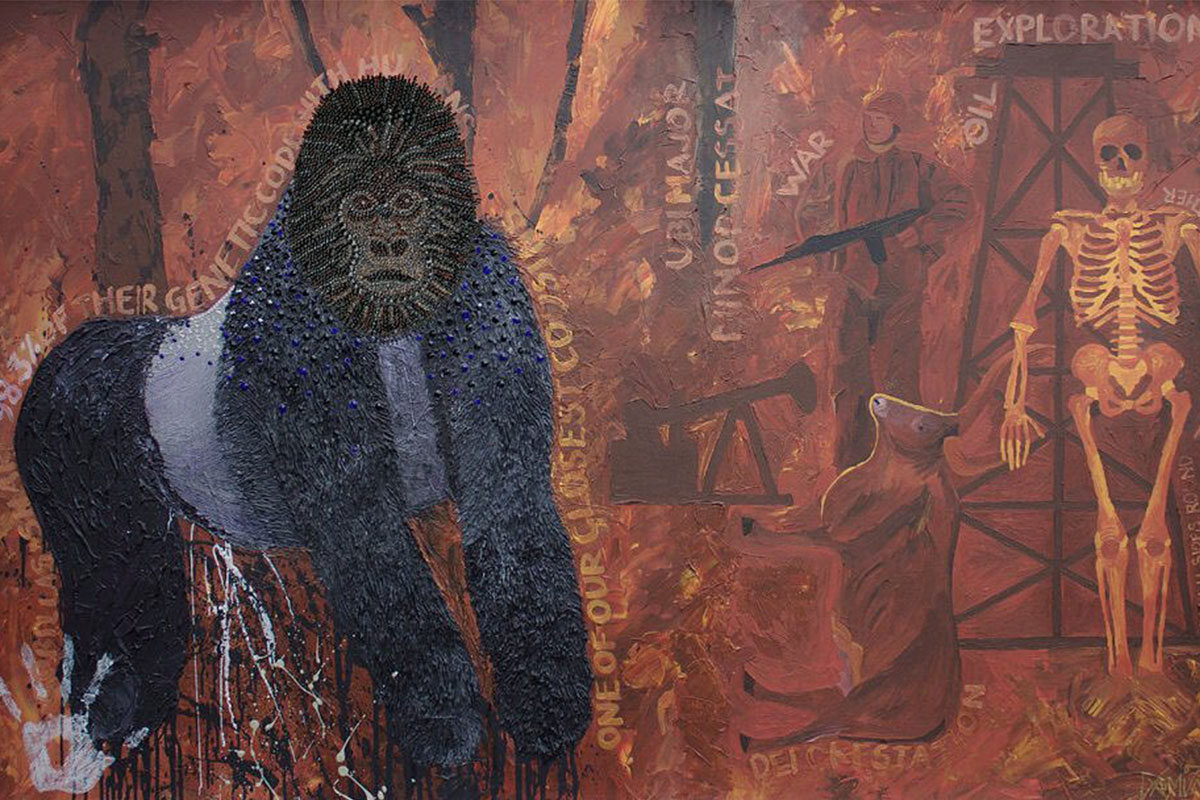
In a sense, you’re a storyteller. What do you see as the most important stories to tell?
The subjects I depict are personal to my identity and values as an environmentalist, yet they are also universal and reaching a critical tipping point for every individual. Climate change, ocean pollution, environmental degradation, habitat loss and the current rapid rate of extinction are all issues that have devastating implications and represent the biggest challenges we face. Without urgent action on these momentous issues, we may not have the luxury to concern ourselves with others. I evoke my own values, beliefs, hopes and concerns, in a fusion of densely layered compositions signifying both chaos and order to elicit an initial emotional connection, with many levels of meanings and discoveries to be made on closer inspection. On discovering that there were only approximately thirty Amur Leopards left in the wild, I felt an urgency to translate this shocking information into a painting entitled Soulless: This Is Not A Leopard. It is a play on the title of a painting by Rene Magritte in order to highlight the tragedy that we may soon only be able to see these creatures in 2D representations. The work is also influenced by Dante’s Divine Comedy where the leopard appears as an allegory for self-indulgence. Here, it represents the greed of man in the persecution of these creatures and is depicted with hollowed out eyes as a contrappasso, symbolizing starvation of the soul. The spiral in the lower right-hand corner represents Dante’s nine circles of hell. However, it also forms both the lucky figure eight and the symbol of infinity when juxtaposed with the circle of text above, written in both English and Latin in the shape of the number thirty, indicating the approximate numbers of these creatures left in the wild.
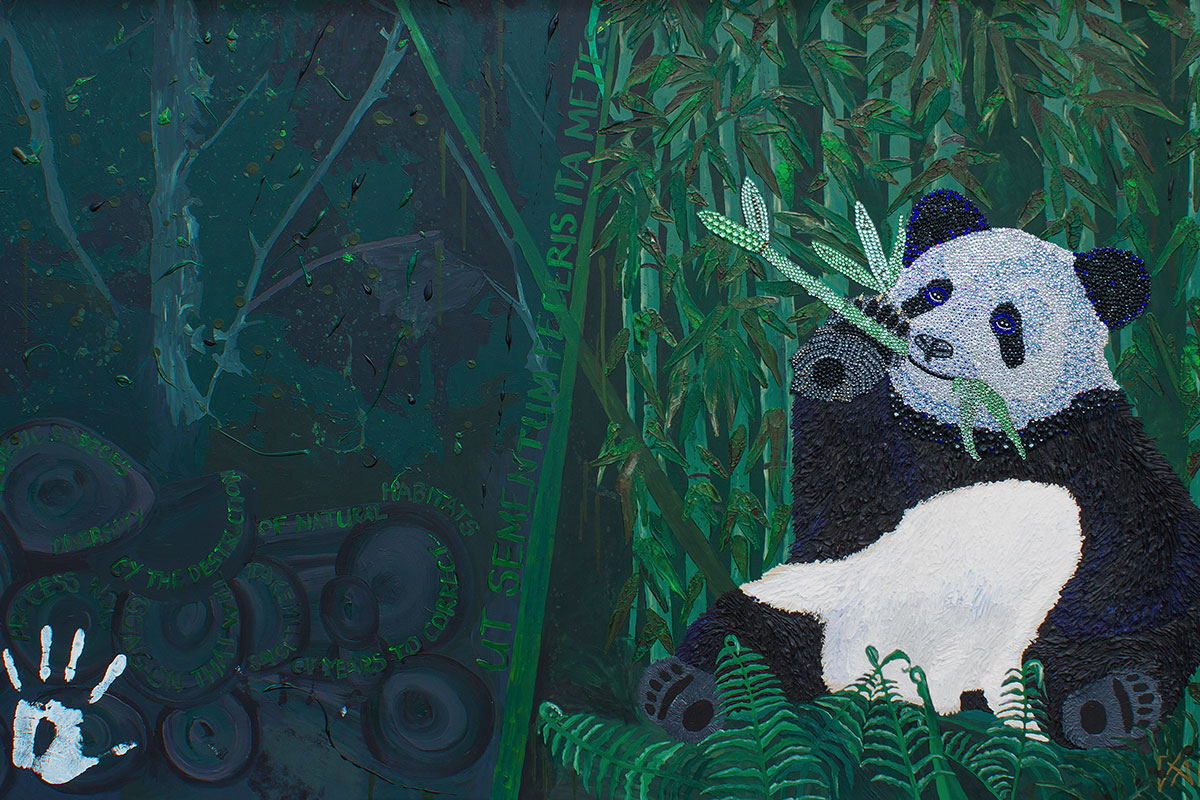
What are your thoughts on reversing what’s happening to our planet and her animals?
Individuals, companies, business leaders and influencers are taking up the mantle and a wave of pressure is being applied by young people all over the world. This is all positive, but the scale of the problem requires political leadership, guided by science and action on a global scale for the sake of the planet. Difficult decisions have to be made, despite lobbying from financially vested interests to maintain the status quo. Innovation to increase clean energy and reduce the use of plastic must be fast-tracked and supported into the mainstream. We cannot negotiate with nature. The lungs of our planet are on fire, polar ice caps are melting, sea levels are rising, the ocean is losing oxygen through rising temperatures with a knock-on effect for critical ecosystems, and we are currently experiencing a mass extinction of plant and animal species, all caused by humans. Each of these events has an impact on the next and if we don’t collectively act as if our own house is on fire we will rapidly reach a tipping point. Humanity will not be spared and unfortunately the poorest will be impacted first. Despite this, it is important to be optimistic and realize that action with utmost urgency can still have a positive impact. I was inspired by a quote from polar explorer Robert Swan OBE: “The greatest threat to our planet is the belief that someone else will save it.” I created a mixed media artwork entitled Qui Tacet Consentire or Who Is Silent, Gives Consent as a representation for sloth, the only deadly sin which involves inaction. It features a polar bear and melting ice sheet, and the title is painted in the ‘dead’ language of Latin. We know what must be done and what must be avoided. The science couldn’t be clearer.

